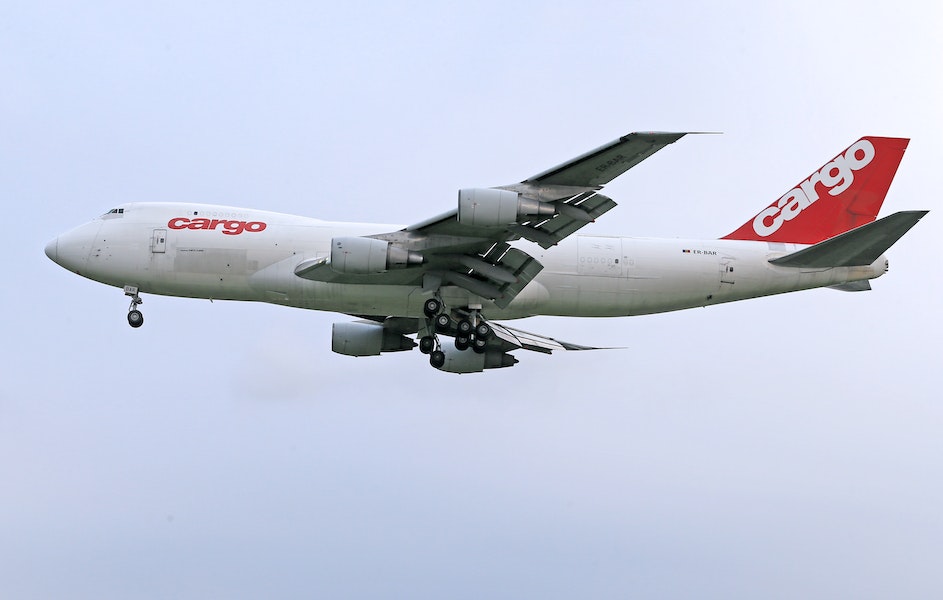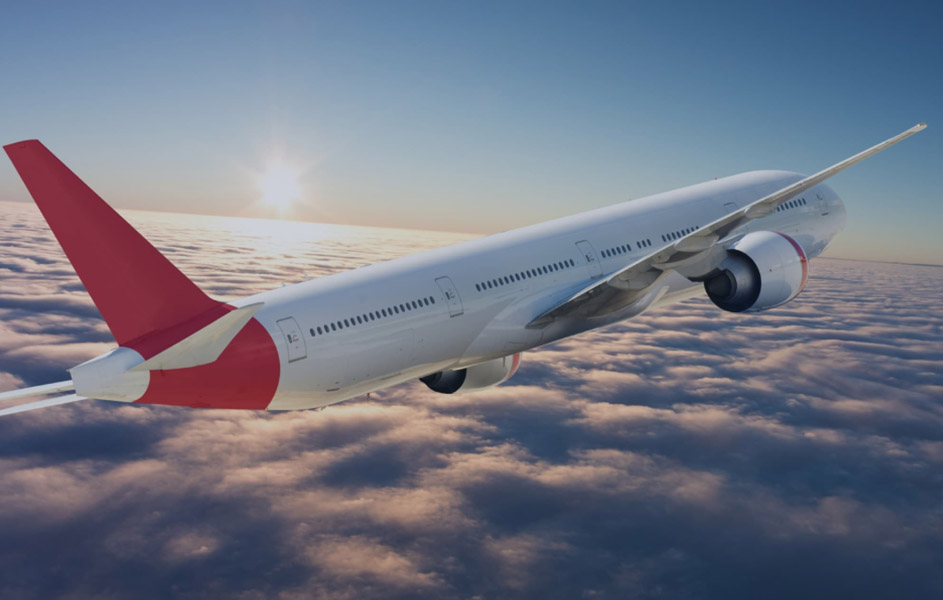Our Blog
Blogs
Keep on top of the latest trends in Air Cargo.
How Soaring Shipping Costs Raise Prices Around the World
The sea carries more than 80 percent of the world’s traded goods, most of which sail inside 40-foot-long steel containers stacked by the thousands atop some of the largest vessels ever built.
The shock of the pandemic underscored just how crucial the maritime container trade is to the global economy. From Shanghai to Rotterdam to Los Angeles, the coronavirus upended supply chains. Ports lacked workers who were home sick. Truck drivers and ship crews couldn’t cross borders because of public health restrictions. Pent-up demand from huge stimulus programs during extended lockdowns overwhelmed the capacity of supply chains. Besides causing delays in getting goods to customers, the cost of getting them there surged.
As the Chart of the Week shows, the result of those challenges was that the cost of shipping a container on the world’s transoceanic trade routes increased seven-fold in the 18 months following March 2020, while the cost of shipping bulk commodities spiked even more. Our new research shows that the inflationary impact of those higher costs is poised to keep building through the end of this year . Our analysis predates the war in Ukraine but isn’t isolated from it: the conflict will likely exacerbate global inflation.
Studying data from 143 countries over the past 30 years, we find that shipping costs are an important driver of inflation around the world: when freight rates double, inflation picks up by about 0.7 percentage point. Most importantly, the effects are quite persistent, peaking after a year and lasting up to 18 months. This implies that the increase in shipping costs observed in 2021 could increase inflation by about 1.5 percentage points in 2022.
While the pass-through to inflation is less than that associated with fuel or food prices—which account for a larger share of consumer purchases—shipping costs are much more volatile. As a result, the contribution in the variation of inflation due to global shipping price changes is quantitatively similar to the variation generated by shocks to global oil and food prices.
Our findings also reveal some of the mechanisms at work. We show that higher shipping costs hit prices of imported goods at the dock within two months, and quickly pass through to producer prices—many of whom rely on imported inputs to manufacture their goods.
But the impact on the prices consumers pay at the cash register builds up more gradually, hitting its peak after 12 months. This is a much slower process than what is seen after a rise in global oil prices, which drivers feel at the pump within a couple of months.
Rising shipping costs affect inflation in some countries more than others. First, our research shows that the structural characteristics of an economy matter. Countries that import more of what they consume see larger increases in inflation, as do those who are more integrated into global supply chains. Similarly, countries that typically pay higher freight costs—landlocked countries, low-income countries, and especially island states—see more inflation when these rise.
Second, a strong and credible monetary policy framework can play a role in mitigating the second-round effects from import prices and inflation. Our analysis shows that keeping inflation expectations well-anchored is key to containing the effect of soaring shipping costs on consumer prices, particularly core measures that exclude fuel and food.
Our results suggest the inflationary impact of shipping costs will continue to build through the end of 2022. This will create complicated trade-offs for many central bankers facing increasing inflation and still ample slack in economic activity. Moreover, the war in Ukraine is likely to cause further disruptions to supply chains, which could keep global shipping costs—and their inflationary effects—higher for longer.
“The key to being a successful GSSA is agility”
The agility and quick thinking of GSAs has kept cargo moving through uncertain and turbulent times. Stephen Dawkins, chief executive officer, Air Logistics Group; Zafer Aggunduz chief marketing officer, Global GSA Group; and Ingo Zimmer, CEO, ATC Aviation Services spoke to ACW about how the unsung heroes of the past year have ensured goods got from A to B.
ACW: With uncertainty surrounding capacity, routes and staff, how have GSAs had to adapt throughout the pandemic?
Dawkins: The last year has been challenging for everyone in the industry and for GSSAs it has highlighted the requirement for us to continually evolve. Air Logistics has continued to invest during these challenging times, by adding value where we can and easing the pressure on our Airline Principals by assisting our forwarding clients with especially demanding service levels. In the current climate capacity is scarce and GSSAs need to provide high quality solutions for their forwarding clients.
Air Logistics is focussed on enabling our teams with the right tools to realize efficiencies that enhance sales and yields for our Partners.
The pandemic highlighted the importance of our continuous investment in our network, IT infrastructure and digitalising our processes to provide faster quotations to our client base of over 16,000 freight forwarders worldwide.
Around the world the impact of COVID-19 was swift, Air Logistics teams had the tools & systems (communications / financial / operations / business intelligence) in place to work directly from home immediately, ensuring swift and efficient communication with our Forwarding and Airline clients.
Aggunduz: The air cargo industry is already a fast paced industry. Everyday is different so our teams already have the experience to cope with challenges and so they are able to act fast.
For Global, the most important thing was the safety of our people, so we took measures in each country to see what we needed to do to keep our staff safe and abide my each country’s rules and regulations.
Everyday was an uncertainty. We were not able to plan ahead in regard to rates and capacity. The main solution for us was to have daily communication with airlines and agents.
When you have this kind of uncertainty, there is also a lot of opportunity that arises. We had to be creative to take advantage of opportunities.
For example, we have a company called ChartAir Cargo. A few years ago we started this as there was a gap in the market and we try to act as a broker as we
receive a lot of requests from the market that we cannot act on with the portfolio that we have.
Zimmer: As a consequence of the pandemic the capacities on passenger flights dropped significantly. In order to cater for the demand we decided to offer charter services in addition to the GSSA segment. Volker Dunkake had been appointed to head our Charter and Solutions team.
Volker has a broad experience in the charter business and before he joined ATC he was part of the Lufthansa Cargo Charter management. At the beginning of the pandemic the focus of the new department was on pax freighter charters exporting masks, gloves and ancillary equipment from China into destinations everywhere in the world. About 100 charters had been handled to Europe, Africa and South America.
At the same time a COVID Task force has been put together. Thomas Baumert, a veteran in the Pharma business, and his team analysed the situation, talked to the concerned stakeholders in the logistic chain and offered solutions to our customers.
Beside pax charters the solution team started to sell unused capacities from agent charters. Our group did set-up own charter chains into the USA.
ACW: Do you think the role of the GSSA has changed during this time? Why?
Dawkins: During the pandemic airlines have been downsizing or parking their fleets and reducing the number of flights they operate. With this reduced activity, Airlines are having to make the difficult decisions to furlough or reduce head count and as such working with an outsourced cargo provider makes sense until the market returns, we all anticipate in 2022.
Air Logistics Group offers more than just a selling solution – it provides additional administrative & back-office functions, IT & business intelligence solutions, alongside experienced sales and customer service teams.
Any or all of these services can be selected by our airlines to ensure their cargo operation runs smoothly and provides a vital revenue stream during these challenging times in our industry.
Aggunduz: I think going forward it will definitely change. In this period all the carriers who had offices outside their own country had difficulty complying with the differing regulations.
As a GSA we have 20 or 30 years experience and with that comes strong relationships. We know the agents by heart and we have personal relations with them as well as knowledge and expertise of the market.
As a GSA we have various airlines, so we were able to take advantage of the buying power we have. We were also able to support the carriers we have in their portfolio as a lot of carriers cancelled some routes but in order not to lose the business we were able to book it on other carriers.
Zimmer: During COVID, we changed slightly into the role of a capacity provider and were forced to offer solutions. Not only selling scheduled carriers capacities because these capacities were insufficient for the airfreight demand.
Air Charter Services Market Size And Forecast
Air Charter Services Market was valued at USD 25,574.6 Million in 2018 and is projected to reach USD 34,930.2 Million by 2026, growing at a CAGR of 4.04% from 2019 to 2026.
Major factors like time shortages, last-minute capacity, and unanticipated applications have also led to a push in the adoption of Air Charter, and hence the growth of Air Charter Services market size. The Global Air Charter Services Market report provides a holistic evaluation of the market. The report offers a comprehensive analysis of key segments, trends, drivers, restraints, competitive landscape, and factors that are playing a substantial role in the market.
What is an Air Charter?
An unscheduled flight that is not part of a regular airline routing is a charter flight. With a charter flight, one can rent an entire aircraft and can decide on the departure/arrival locations and times as per requirement. In contrast with the scheduled flights, the seats on charter flights can be sold individually through a charter company or by tour operators as a part of some travel package. Moreover, travelers can also hire an entire charter for a group (or an individual).
The industry provides services for air transit for passengers as well as cargo over regular routes and on regular schedules. In case of this industry, the corporations and large businesses usually account for a large proportion of industry revenue as such businesses are in the capacity to use charter flights to transport staff between different work sites and to and from meetings, as well as to transport goods exclusively. Companies are more likely to use chartered flights for their staff when the corporate profit is high and economic conditions are strong.
Global Air Charter Services Market Overview
The growth in demand in the air cargo market is a positive prospect for air cargo providers and cargo charter operators which is expected to fuel the market for Air Charter Services over the forecast period. In recent times there has been an increasing number of shipments being delivery by air due to the growing demand by the customers for instant and timely delivery of their products. Major factors like time shortages, last-minute capacity, and unanticipated applications has also led to a push in the adoption of Air Charter, and hence the growth of Air Charter Services market size.
Moreover, the on-demand charter jets are a growing choice of high and ultra-high net worth individuals as instead of owning jets, which can costlier to own and to maintain, high and ultra-high-net-worth individuals, are now gravitating towards private charter which is anticipated to boost the market further during the forecast period.








